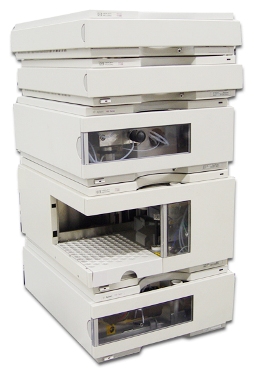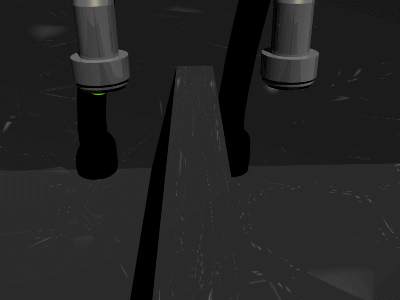Because of lack of small pores it is difficult to separate small molecules with polymer monoliths in isocratic mode. We have prepared monolithic capillary columns and then hypercrosslinked them to afford a monolith containing an array of small pores [1].
 I had to solve connection problem in between the Bruker MS and Agilent LC (Agilent shutdown). On the very end, I found out there was no problem in their mutual communication. However, it shows me the future of the instrumental services. WebEx communication.
I had to solve connection problem in between the Bruker MS and Agilent LC (Agilent shutdown). On the very end, I found out there was no problem in their mutual communication. However, it shows me the future of the instrumental services. WebEx communication.
What do they want

Recently, there was a post about the role of the referees in the science on a The Sceptical Chymist. The post described Nature Physics editorial which focuses on the demands Nature Physics has on the reviewers.
I think, it is not only source of the information for (current and future) reviewers but also for us – scientists trying to publish their work throughout scientific community. No matter if it is Nature Physics, Chemistry, Whatever, …
Therefore, I have chosen seven tips from the editorial and listed them below.
- First of all, the editor reads the submitted paper with related literature to decide if the paper is good enough to be publish in Nature Physics. Only about one fifth of the submitted papers is chosen for further consideration.
- The paper should fits into a wider context. Theoretical paper is often assessed by experimentalists and vice versa. As states in the editorial: Science at its best happens where experiment and theory meet.
- Because of the first selection, they are not primary interested in your opinion whether the paper should or shouldn’t be publish. However, they need to know the strengths and weaknesses of the paper, and in particular contribution of the paper to the field.
- Does the paper make you think to yourself “Wow! I didn’t expect that!” or “Wow! That could be really useful!” They are looking forward to hearing this kind reaction.
- Even among paper that do report major results, very few are so perfectly formed in the hands of their authors as to be suitable for publication with little or no revision.
- Ideally, the significance of every published paper should be clear and accessible to any (physics, chemistry, math, …) graduate. This is one of the main points in the editorial! If even a specialist can’t make sense of it, where is the reason for publication?
- Finally, as a general rule, keep things collegial and stick to the facts. These are, after all, your peers, who could quite possible soon be reviewing your work.
Even though, this list was written for the reviewers, I think there are several important and interesting ideas, which can help us to write better papers with small or even no problems with their publication.
Agilent 1100 shutdown

From time to time, we all face problems with HPLC instruments. Then, we all search the internet for the solution for our problem. In this troubleshooting section I would like to point out my problems with instruments and their solutions. Hopefully, it can help also you.
Recently, I was asked to run the HPLC-MS instrument which was off for several months. The LC part was Agilent 1100 and MS was from the Bruker (HCT+). The instruments themselves worked fine, but there was a problem with their connection. At least I thought so. The Agilent HPLC went always to power off mode after couple of minutes. No matter what I have done, no matter what I have tried. It always went to shutdown mode.
Mobile phase viscosity

UPDATED – One of the general property of the liquids is their resistance to change a form. This resistance is called viscosity and can be expressed as a resistance to flow. In case of liquids, the viscosity can be simply expressed as “thickness”. For example, water is “thin” with low viscosity, while honey is “thick” having a higher viscosity (see example on right). More technically speaking, viscosity is classically defined as the tangential force per unit area necessary to maintain unit relative velocity between two parallel plates in a liquid unit distance apart.